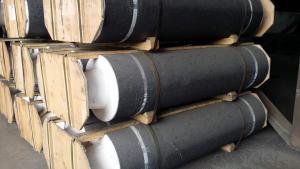When we talk about the graphite electrode machining, it’s like diving into a world of precision and innovation. It’s not just about shaping a piece of graphite into a desired form, but it’s about the journey of how we got there. The impact of technology on this process is nothing short of revolutionary. It’s like watching a caterpillar transform into a butterfly, only this time, it’s graphite taking center stage.
Let’s start with the basics. Graphite electrodes are used in a variety of applications, from electric furnaces to plasma arc cutting. They’re crucial for the production of various metals and alloys. But the process of machining these electrodes has evolved significantly over the years, thanks to the advancements in technology.
Remember the old days when everything was manual? The machinists had to rely on their skills and experience to shape the graphite. It was a labor-intensive process, and the results were not always consistent. But then, technology came along and changed the game.
The introduction of Computer Numerical Control (CNC) machines was a game-changer. These machines can perform complex operations with incredible precision. They’re like the maestros of the machining world, conducting an orchestra of cutting tools to create a masterpiece. The level of detail and accuracy that can be achieved with CNC machines is astounding.
But it’s not just about the machines themselves. The software that drives these machines is equally important. With advancements in computer-aided design (CAD) and computer-aided manufacturing (CAM) software, the process of designing and manufacturing graphite electrodes has become more efficient and accurate. Designers can now create intricate designs and simulate the machining process before it even happens on the machine. This has greatly reduced the time and cost associated with trial and error.
Another significant impact of technology on graphite electrode machining is the use of robotics. Robots have taken over the more mundane tasks, allowing machinists to focus on more critical aspects of the process. They’re like the reliable sidekicks, ensuring that the process runs smoothly and efficiently.
And let’s not forget about the materials themselves. The development of new materials and coatings has improved the performance and longevity of graphite electrodes. They’re no longer just black and brittle; they’re now stronger, more durable, and can withstand higher temperatures.
But with all these technological advancements, there’s also a human element that cannot be ignored. The skills and expertise of the machinists are still crucial. They need to understand the machines, the software, and the materials to make the most out of the technology. It’s like having a powerful tool in your hands, but you need to know how to use it effectively.
In conclusion, the impact of technology on graphite electrode machining has been profound. It has transformed the way we design, manufacture, and use these electrodes. The precision, efficiency, and consistency that technology brings to the table have revolutionized the industry. As we continue to push the boundaries of what’s possible, the future of graphite electrode machining looks brighter than ever. It’s an exciting time to be a part of this industry, and I can’t wait to see what the next wave of technological advancements will bring.

